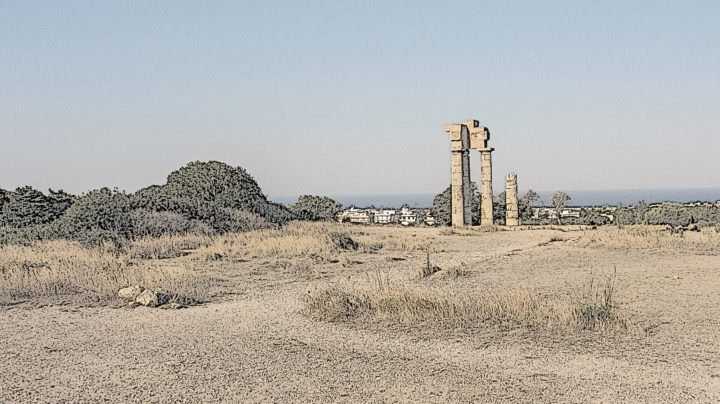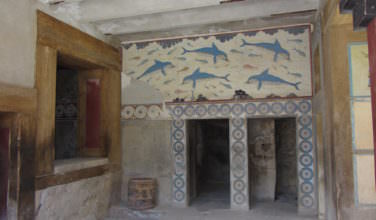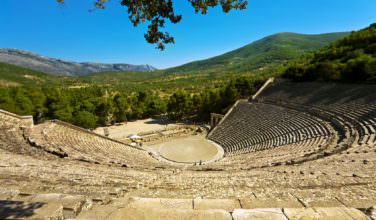What to Know About the Treasury of Atreus (Tomb of Agamemnon)
Comments Off on What to Know About the Treasury of Atreus (Tomb of Agamemnon)
 The Treasury of Atreus, also known as the Tomb of Agamemnon, is the best-preserved and most well-known of nine beehive tombs, referred to as “tholos” in Greek, that have been found in Mycenae, Greece. The Treasury was created in the same basic style of the other eight tombs with some differences. There has been ongoing historical debate about who is actually buried here, and the various theories have impacted the names for this historical site. Here’s more information about it:
The Treasury of Atreus, also known as the Tomb of Agamemnon, is the best-preserved and most well-known of nine beehive tombs, referred to as “tholos” in Greek, that have been found in Mycenae, Greece. The Treasury was created in the same basic style of the other eight tombs with some differences. There has been ongoing historical debate about who is actually buried here, and the various theories have impacted the names for this historical site. Here’s more information about it:
History of the Treasury of Atreus
Historians believe that the Bronze Age tomb was built between 1350 and 1250 BC and was one of the final tholos tombs constructed at Mycenae. Despite the two commonly-used names, neither Agamemnon nor Atreus are buried there. German archeologist Heinrich Schliemann gave the tomb its name in error in 1879 upon his discovery of the shaft graves. Contemporary archaeologists believe that an earlier ruler was buried there, though the precise identity of that sovereign remains unknown.
The tomb was mentioned in the writings of Pausanias and is believed to have served as a treasury during his lifetime. Unsurprisingly, all treasures and artifacts buried with the unknown ruler have long since disappeared.
Basic Structure of the Tomb
The Treasury was built into the side of a Mycenaean hill. The entry chamber is semi-subterranean with a corbel arch portal. At 120 tons, the lintel stone above the portal is one of the tomb’s most impressive features. An open triangular space lies just above the lintel and funnels weight off of the lintel and onto the sides of the structure.
The entry chamber’s dome, 13.5m high and 14.5m in diameter, was the tallest and widest in the world for over a thousand years. Construction of the room took place by digging vertically into the hill. Once the room was excavated, stone from the floor level was used to wall and roof the space. The excavation hole at the top of the hill was then back-filled with collected earth.
A smaller chamber sits adjacent to the entry chamber. Archaeologists surmise that the larger entry chamber existed for ritual use while the adjacent chamber was the site of the burials. The tomb is entered through a 36m uncovered hall (dromos).
Artistry of the Tomb
The entry portal was splendidly decorated: half-columns in green limestone engraved with a zig-zag design, spiral adornments of red marble closing the triangular relief aperture, and a rosette-trimmed frieze just above the lintel. Elsewhere in the tomb, the designers incorporated inlays of red porphyry and green alabaster – quite a luxury for the time.
Fragments of the decorative artistry were removed by foreign archaeologists and are now on display in museums outside of Greece. In particular, segments of the columns and of the lintel adornments are found in the British Museum; one of the capitals is now in the Pergamon Museum in Berlin. The capitals were notable for their clear inspiration by ancient Egyptian designs.
The scale, the level of craftsmanship, and the display of architectural skill in the Treasury of Atreus has been studied and analyzed since it was discovered. Although there is some debate as to who is buried here, the place is relatively intact.
Categorized in: Ancient Greek History
This post was written by Greek Boston
Share this Greek History Article:





